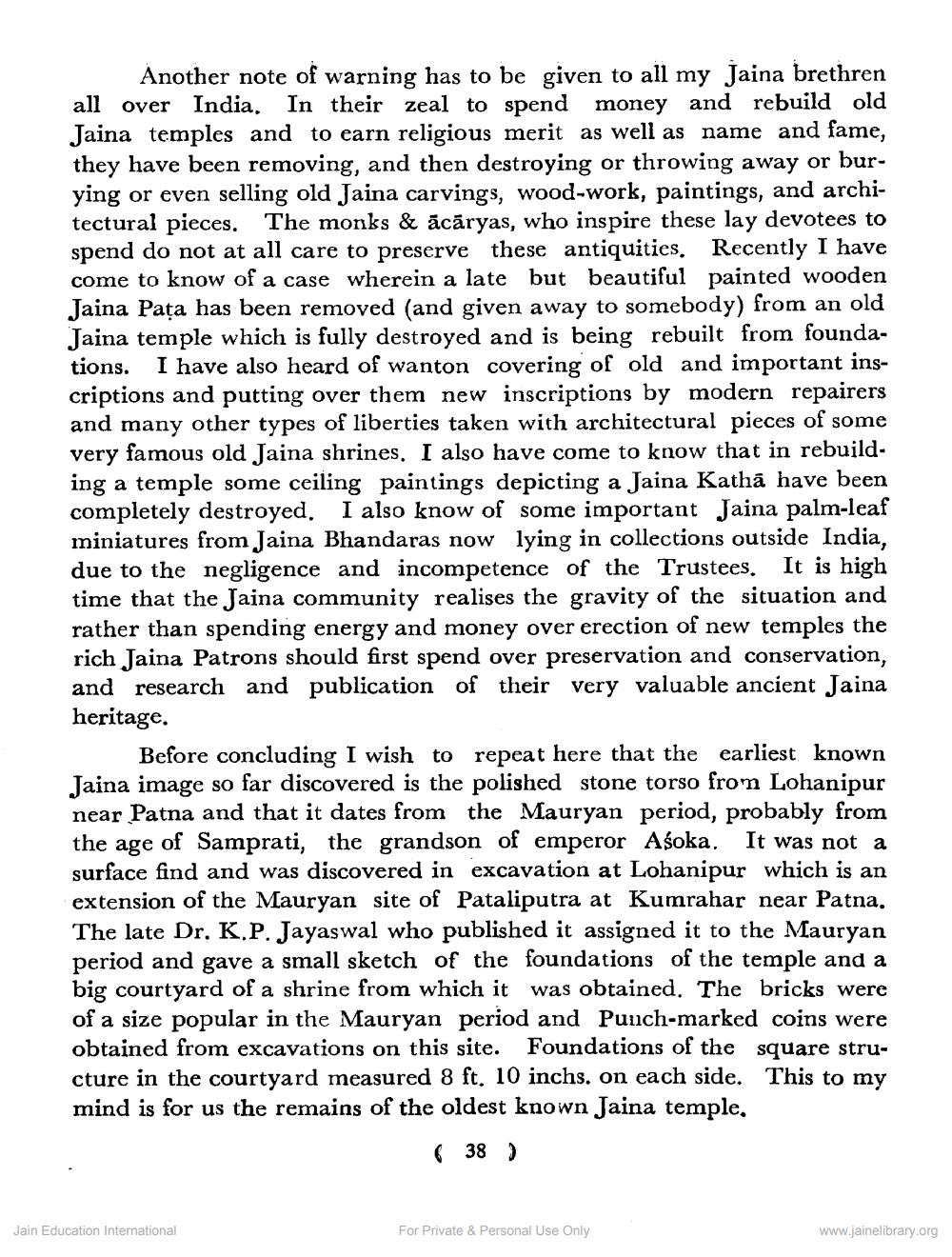________________
Another note of warning has to be given to all my Jaina brethren all over India. In their zeal to spend money and rebuild old Jaina temples and to earn religious merit as well as name and fame, they have been removing, and then destroying or throwing away or burying or even selling old Jaina carvings, wood-work, paintings, and architectural pieces. The monks & acāryas, who inspire these lay devotees to spend do not at all care to preserve these antiquities. Recently I have come to know of a case wherein a late but beautiful painted wooden Jaina Pata has been removed (and given away to somebody) from an old Jaina temple which is fully destroyed and is being rebuilt from foundations. I have also heard of wanton covering of old and important inscriptions and putting over them new inscriptions by modern repairers and many other types of liberties taken with architectural pieces of some very famous old Jaina shrines. I also have come to know that in rebuilding a temple some ceiling paintings depicting a Jaina Katha have been completely destroyed. I also know of some important Jaina palm-leaf miniatures from Jaina Bhandaras now lying in collections outside India, due to the negligence and incompetence of the Trustees. It is high time that the Jaina community realises the gravity of the situation and rather than spending energy and money over erection of new temples the rich Jaina Patrons should first spend over preservation and conservation, and research and publication of their very valuable ancient Jaina heritage.
Before concluding I wish to repeat here that the earliest known Jaina image so far discovered is the polished stone torso from Lohanipur near Patna and that it dates from the Mauryan period, probably from the age of Samprati, the grandson of emperor Aśoka. It was not a surface find and was discovered in excavation at Lohanipur which is an extension of the Mauryan site of Pataliputra at Kumrahar near Patna. The late Dr. K.P. Jayaswal who published it assigned it to the Mauryan period and gave a small sketch of the foundations of the temple and a big courtyard of a shrine from which it was obtained. The bricks were of a size popular in the Mauryan period and Punch-marked coins were obtained from excavations on this site. Foundations of the square structure in the courtyard measured 8 ft. 10 inchs. on each side. This to my mind is for us the remains of the oldest known Jaina temple.
( 38 )
Jain Education International
For Private & Personal Use Only
www.jainelibrary.org




